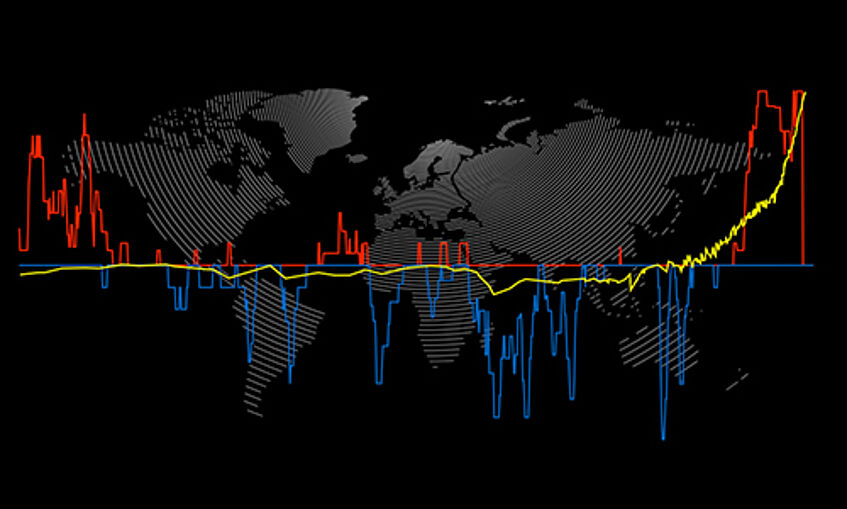Climate Change

Climate Change – One of the biggest challenges in the Anthropocene
Climate Change
Climate change is a key issue in the Anthropocene and helps illustrating what it means that humans have become a “geophysical force” and a “geological agent” in our time (see Anthropos). Anthropogenic climate change was what Paul Crutzen had in mind, more than anything else, when he proposed the term “Anthropocene” back in 2000. Global warming today is due to a dominance of human influences over natural forces in the climate system. Since the dawn of industrialization, excessive burning of fossil fuels and the expansion of food production for rapidly growing numbers of people have released greenhouse gasses such as carbon dioxide, methane and nitrogen oxide into the atmosphere. This has caused significant changes in the chemical composition of the atmosphere, so that the anthropogenic greenhouse effect now overrules natural drivers of climate change such as fluctuations in solar radiation or volcanism. This is unique in Earth history, even though there have been changes of the planet’s climate in its estimated 4.54 billion years of existence. In the last 200,000 years, since anatomically modern humans (Homo sapiens) have been around, climatic changes came about in cycles between cold periods with lots of ice on Earth, and warmer periods with less ice.
The last 11,700 years, which geologists call the Holocene, were a warm period. With natural forces still undisturbed as they used to be, the Holocene would end not too long from now in another cold period. The glacial masses around the poles would be expanding slowly. But the opposite is happening, since the anthropogenic greenhouse effect has reversed this long-term cooling trend. Instead, earth is now warming at an unprecedented rate. Even if we could instantly stop releasing more greenhouse gases into the atmosphere, climate models have shown that the next ice age will already have been delayed by at least 100,000 years. What could be a better illustration of what it means that humans collectively have become a geological force? Anthropogenic climate change may be most prominent in public awareness. Still, it is only one aspect among others of how humans have changed the state of the planet. The ratio and speed of loss in variety of biological species, for example, is equally alarming as climate change. It is, of course, also due to anthropogenic climate change that many species that have lived on earth for millions of years are now being threatened, or are already extinct. Other control variables that are used to assess the state of the planet are either reaching or crossing thresholds, beyond which irreversible rapid environmental change is most likely to occur (Planetary Boundaries).
— Franz Mauelshagen
Researchers: Erich Dragantis, Eva Horn, Franz Mauelshagen, Patrick Sakdapolrak, Peter Schweitzer
Further Reading
- Crutzen, P. J. and Stoermer, E. F. (2000) The ‘Anthropocene’. Global Change Newsletter IGBP 41 (May 2000): 17–18.
- Gardiner, S. M. (2011) A Perfect Moral Storm: The Ethical Tragedy of Climate Change. Oxford: Oxford University Press.
- Latour, B. (2017) Facing Gaia. Eight Lectures on the New Climate Regime. Trans. C. Porter. London: Polity.
- Hamilton, C., Gemenne F. and Bonneuil, C. eds. (2015) The Anthropocene and the Global Environmental Crisis. Rethinking Modernity in a new Epoch. London: Routledge.
